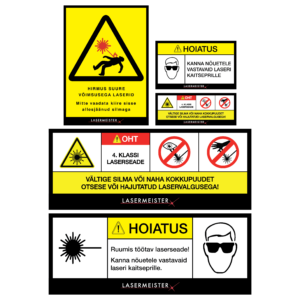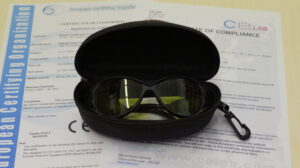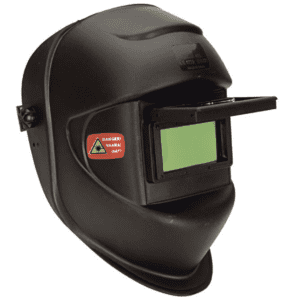Lasers are classified for safety purposes based on their potential to cause damage to human eyes and skin.
Most laser products are required by law to be labeled with their class. It is added with either Arabic numerals (1, 2, 3R, 3B, 4) or Roman numerals (I, II, IIIa, IIIb, IV).
There are 4 main classes of visible beam consumer lasers. The first two of them are relatively safe for eyes and skin, the other two are dangerous.
The following information applies to the visible laser beam and the safety distances are less than ¼ second to the eye for unintentional exposure.
- Class 1 / I – lasers with a visible beam below 0,39 mW or the laser is internal to the device and cannot be accessed when the device is operating. Not an immediate eye or skin hazard, but can be dangerous when viewed through binoculars or a magnifying glass. Used for closed laser devices (CD players, DVD players, etc.)
- Class 2 / II – lasers with a visible beam below 1 mW. Safe for the eyes if not looking at the beam directly and less than ¼ second, can be dangerous if looking through binoculars or a magnifying glass. Does not pose a direct risk to skin or combustible materials. Considered safe at a distance of 7 m (for 0,99 mW). Used in barcode readers.
- Class 3R / IIIa – visible beam lasers with a power of 1 to 4,99 mW. Low risk of eye damage if the beam is reflected or is short-lived, avoid direct and long-term exposure to the eyes. Does not pose a direct risk to skin and combustible materials. Considered safe at a distance of 16 m (4,99 mW). Used in laser pointers.
- Class 3B /IIIb – visible beam lasers with a power of 5 to 499,9 mW. Dangerous for eyes, avoid direct and reflected rays. It is generally safe to look at the laser dot, not to look closely for long periods (more than 2 seconds). Poses a hazard to skin and combustible materials in the case of a close and prolonged beam. Considered safe at a distance of 160 m (499,9 mW). Used in laser light show projectors, industrial lasers and scientific lasers.
- Class 4 / IV – visible beam lasers with a power exceeding 500 mW (1/2 W). Extremely dangerous for eyes, avoid direct and reflected rays. Avoid looking at the dot, the laser is too bright if the light dot stays on your eyes for more than 10 seconds. Avoid direct contact with skin, may cause immediate burns. Can immediately burn the material, avoid direct contact with easily combustible materials (dark materials and light materials (paper, cloth)). 224 m (1000 mW) and 710 m (10 W) are considered safe. established in laser light show projectors, industrial lasers, scientific lasers and medical lasers for eye surgery or skin treatment.
Although the same classes apply to non-visible beam lasers, added caution should be used because it may not be known in which direction the laser beam is traveling.
More information (in English):
https://www.lasersafetyfacts.com/resources/Spreadsheet—laser-classes.pdf
https://www.lasersafetyfacts.com/resources/FAA—visible-laser-hazard-calcs-for-LSF-v02.png

In order to protect yourself and employees from the dangers of lasers, it is important to use laser protective equipment in the workplace that corresponds to the laser's hazard class and wavelength.
- Laser safety glasses – the simplest personal protective equipment, mandatory for everyone who is in the immediate vicinity of the laser. If there is an open design laser cutting machine, it is a must for everyone who is in the same room as the laser. When choosing laser safety glasses, it is important to choose glasses that correspond to the wavelength of the beam of the laser cutting machine.
- Laser welding mask – Laser welding masks protect against extremely strong UV and IR radiation, which occurs when working with open laser devices. suitable for use in laser welding, laser cleaning and other situations where exposure to laser radiation is immediate.
- Separation curtains – used in the room where the laser cutting machine is located to reduce the size of the dangerous area more effectively. Various options are offered, whether stationary or mobile, for the floor, walls, window coverings and ceiling coverings.
- Smoke and fire detector – it is recommended to add a fire sensor inside the laser cutting bench to inform the operator and users if a fire should break out in the bench.
- Machine operation indicator – the bright red light is highly visible and warns bystanders that the laser bench is being used.
Contact Lasermeister to find the right laser protective equipment for you. info@lasermeister.ee


